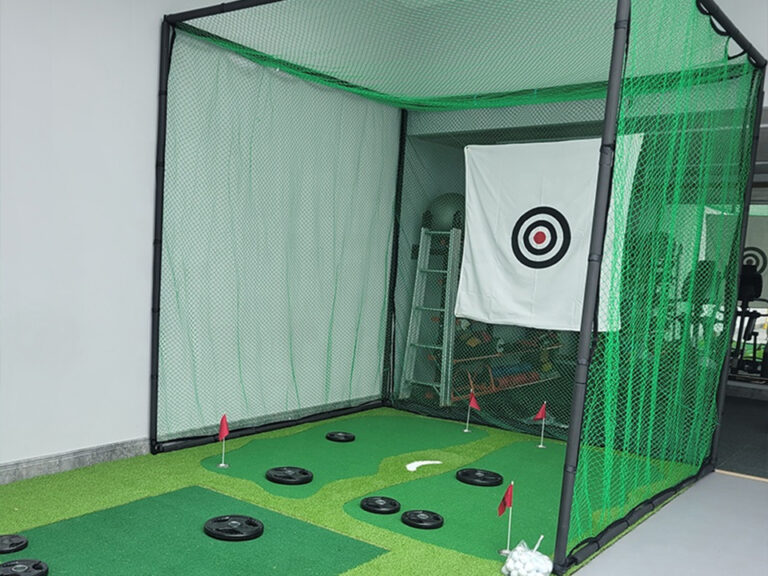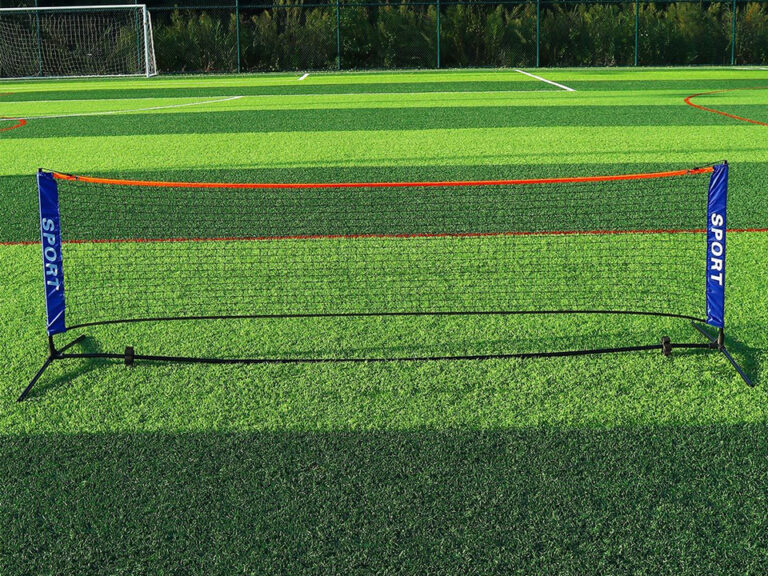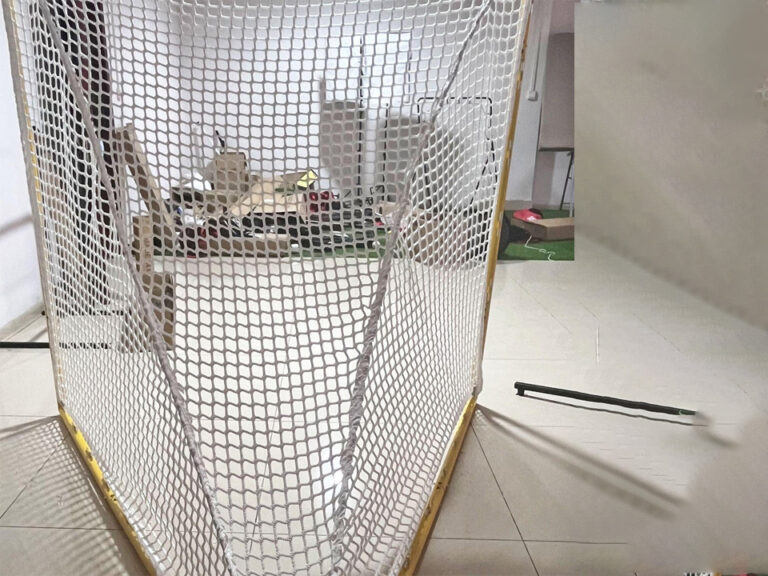Why Do Baseball Batting Cages Tear After One Season
If your batting cage kept up for a few months and then gave up, you’re not alone. Most early failures come from a simple mix of wrong material, thin twine, tight installs, and tough weather. Let’s break it down in plain English and show you how to spec, install, and maintain a cage that actually lasts. I’ll also point you to FSPORTS pages where you can see real products that match the specs we’re talking about.
Table of Contents
UV Degradation in Batting Cage Netting
Sun is brutal. UV light makes fibers dry, brittle, and weak. When a net spends all day outside with no UV-stable material or shade, it starts to fuzz, stretch, and finally rip at high-stress points. If your cage lives outdoors year-round, pick netting built for sunlight and pair it with shade or seasonal storage.
Pro tip: If you run a school or facility and want a ready-to-use package, explore a complete cage like the FSPORTS baseball and softball batting cage net and frame or the space-saving pro garage softball batting cage net. Both are set up with practical hardware and are easy to take down during off-season.

Nylon vs. HDPE: Which Material Fits Your Use Case?
Choose the fiber for your environment, not the catalog photo.
- HDPE (polyethylene) resists UV, doesn’t soak up water, and holds shape well outdoors. It’s the go-to for school fields and backyard cages that sit in sun and rain.
- Nylon shines in abrasion resistance and impact strength. Indoors, it’s a tank. Outdoors, it needs weather treatment and more care because it can absorb water and stretch.
If you’re training indoors or you want the most “bulletproof” feel for heavy team use, nylon makes sense. If your cage lives outside, HDPE is usually the smarter call.
Twine Gauge Selection
Gauge (or “line number”) matters. Thin twine might look tidy on day one, but it won’t forgive machine-pitch sessions.
- #21: Light duty. Casual, low-volume hitting.
- #36: Sweet spot for schools and serious backyard hitters.
- #42: For high-traffic cages, academies, and commercial settings.
When in doubt, size up. It’s cheaper than buying another net next spring.

Installation Best Practices for Batting Cage Nets
Most “one-season tears” come from installs that are too tight or pinned at the bottom.
- Let the net “drape.” A little slack absorbs energy. A trampoline-tight net sends the load to knots and seams.
- Don’t hard-fix the bottom edge. Use a light ground line or sandbags so the net can move.
- Protect wear points. Wherever net meets pole, cable, or hook, add sleeves or abrasion guards.
- Plan ball flight. Angle side panels so hot liners don’t concentrate force at a single seam.
Need a compact training station to learn the right “drape” and tension? Check the portable 7×7 baseball practice hitting net or a wider 12 ft x 9 ft sports barrier net for perimeter protection.
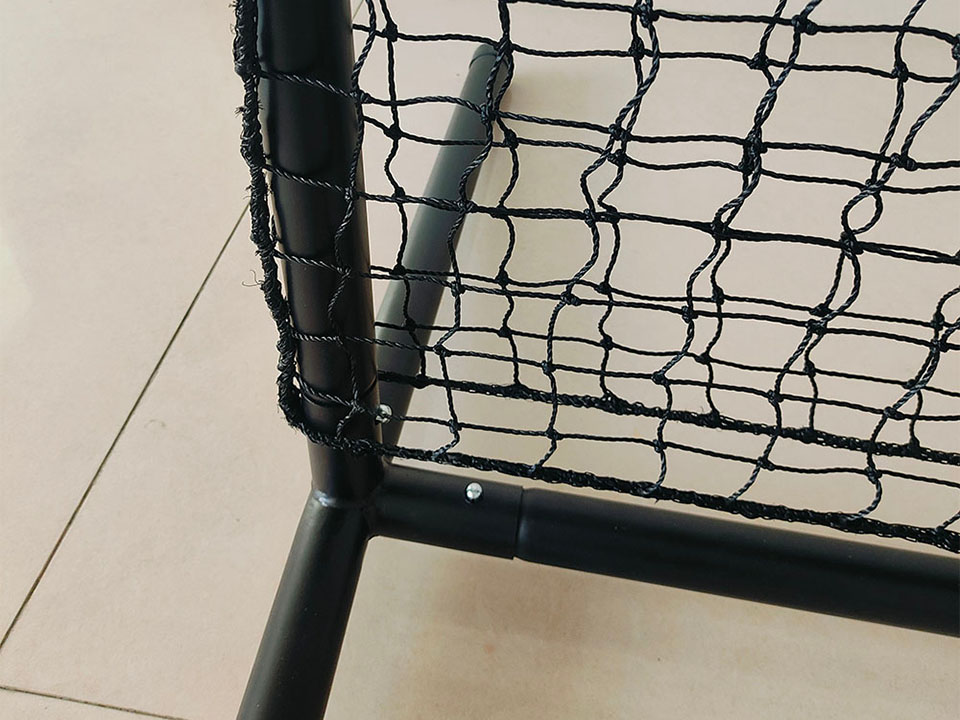
Weather Exposure Management for Outdoor Cages
Wind loads and winter ice are silent killers. A good cage plan includes:
- Storm protocol: Drop the net before high winds or heavy snow.
- Seasonal storage: Wash, dry, and store nets between seasons to prevent mildew and fiber breakdown.
- Shade strategy: A simple shade cloth or partial roof in sunny regions adds years.
If you need help with a purpose-built outdoor kit, browse the FSPORTS products page or start at the homepage to outline your field layout and accessories.
Daily Ops: Maintenance Checklist for Net Longevity
Build five minutes of maintenance into practice:
- Walk the cage. Look for fuzzed fibers, stretched squares, and small cuts.
- Patch early with wide patches, not tiny stitches.
- Rotate high-impact panels. Swap sides to spread wear.
- Check cable tension and carabiners. Sharp edges create “sawing” points.
- Keep the floor clear. Ball carts, tees, and screens with burrs can chew through netting.
For dugout-side workflow, pair your cage with a sturdy baseball and softball ball caddy or the extra-large ball caddy to reduce dragging gear across the mesh.
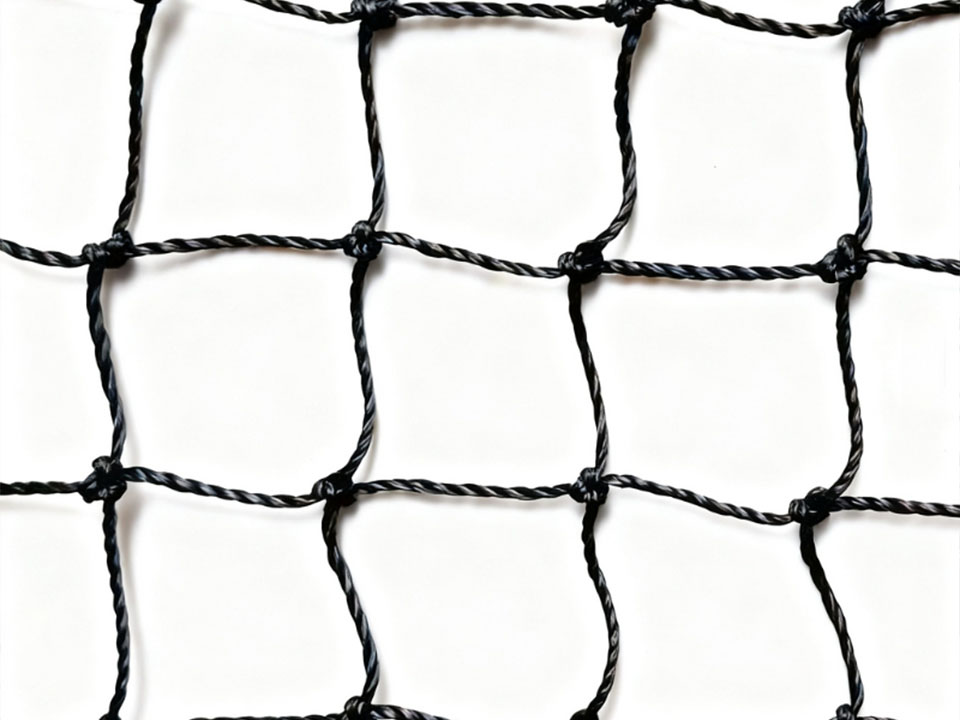
Data Table: What Actually Drives Early Failure?
| Factor | What You See In Season 1 | Root Cause | Fix That Works |
|---|---|---|---|
| Brittle or chalky fibers on sun-side | Fraying, sudden seam tears | UV exposure exceeding material rating | Choose UV-stable HDPE for outdoors; add shade; off-season storage |
| Tears at corners and cable contact points | Rips that start small and spread | Abrasion from hooks, poles, cable sleeves | Add edge guards; use smooth hardware; inspect weekly |
| Stretch and sag after rain | Bat path “catches” net more often | Nylon water absorption; over-tight install | Use HDPE outdoors; add slack; avoid bottom hard-fix |
| Holes at mid-panel after machine pitch | Repeated high-energy impacts on one zone | Thin twine (#21), single impact lane | Move the tee/machine; upgrade to #36/#42; add impact panel |
| Seam “zip-outs” near door or end cap | Long tears along hems | High tension at entry; traffic snags | Looser hang; wider entry; reinforce high-traffic seams |
Spec Cheat Sheet for Buyers
If you’re buying for a program that hits 5–7 days a week, use this as your baseline:
- Environment: Outdoor = HDPE netting with UV inhibitors; Indoor = Nylon acceptable (great durability).
- Gauge: #36 minimum for teams; #42 for academies/commercial turns.
- Paneling: Add a dedicated impact panel where the machine aims.
- Edges: Double-stitched hems and thick perimeter rope.
- Hardware: Smooth galvanized or coated carabiners, pulleys, and cable sleeves.
- Install: Top-hung with even spacing; no hard bottom fix; leave controlled slack.
- Ops: Storm plan, monthly inspection, seasonal take-down and storage.
Want a ready-to-roll setup with the right hardware? Start with the complete baseball and softball batting cage net and frame, then add field protection like an L-screen and a portable baseball practice net with target for side stations.
Real-World Use Cases You Can Copy
School Field
- Spec: HDPE, #36 (or #42 for varsity), full UV treatment, reinforced edges.
- Install: Top cable with pulleys; tie-backs for gusts; quick-release clips for storm drops.
- Ops: Drop before storms; store over winter.
- Add-ons: Perimeter sports barrier net for foul balls; ball caddy to cut net contact.
Training Facility
- Spec: Nylon, #42, abrasion guards at every touch point, replaceable center impact panel.
- Install: Rail system for easy panel swaps; generous drape for energy absorption.
- Ops: Weekly panel rotation; monthly seam inspection.
- Add-ons: Station nets like the 7×7 practice net and a machine-side L-screen.
Backyard Cage
- Spec: HDPE, #36, pre-hung kit for easy set-up and take-down.
- Install: Keep slack; avoid hard bottom; protect corner rub points.
- Ops: Take down for storms and winter; store dry.
- Add-ons: Compact targets like the portable baseball practice net to spread impact.
Why Buy From FSPORTS
FSPORTS builds for real-world training, not photo shoots. If you’re a retailer, distributor, OEM/ODM partner, or a program buying in bulk, ask for:
- Material match: HDPE for outdoor UV; nylon for indoor abrasion.
- Right gauge: #36 minimum for teams; #42 for high-traffic.
- Edge details: Thick perimeter rope, reinforced seams, abrasion sleeves.
- Service plan: Seasonal storage guidance, spare impact panel, and quick patch kit.
You can browse the full range on the products page or kick things off from the Top 1 Premium Sports Netting Manufacturer in China homepage to outline custom sizes, branding, and wholesale bundles. If you need a mixed training lane, pair the cage with an L-screen and extra stations like the 7×7 baseball practice net so you’re not hammering the same square all season.
FSPORTS supports customization, bulk orders, and OEM/ODM for retailers and pro dealers. Tell us your cage length, height, lane count, and use pattern. We’ll translate that into a spec that survives more than one season—without guesswork.

